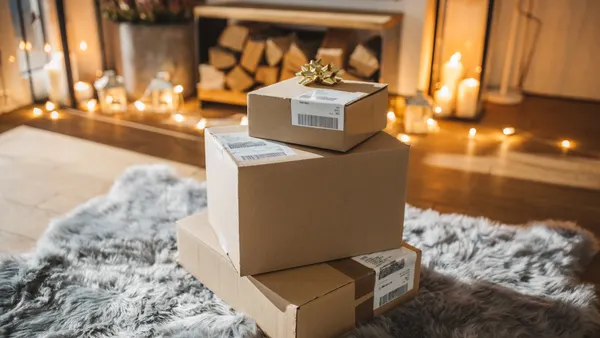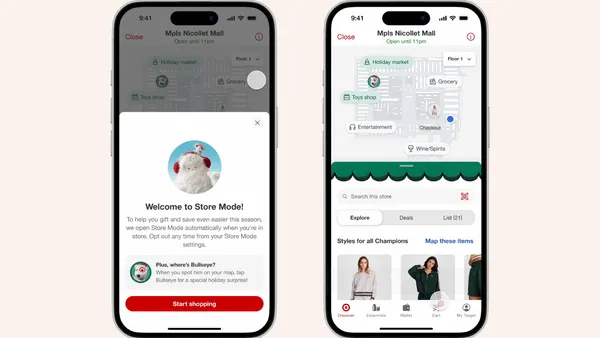If ever there was a doubt as to the value of footfall in a store, Kohl's recent decision to accept Amazon returns at all its stores confirms its vote for more traffic regardless of intent, even returns. Upon announcing it will accept Amazon returns at all of its stores, Kohls' stock price jumped by 12%.
There are many reasons for a consumer to engage (purchases, returns, services, repairs, bill payments, genius bar appointments), and infinite interaction points across the retailers' website, physical store, call center, etc. The term "customer journey" has become so cliché and overused that, to many, the activities resulting from a particular journey may seem random, but absolutely the store traffic and other attributes of the journeys whose role it is to create "identifiable traffic" are very predictable and can be planned for. Further, the insight to be gleaned from this traffic is hugely valuable in planning future retail performance.
The value of journeys associated with identifiable traffic is twofold:
- an opportunity to convert and sell and
- moments are created that offer an ability to endear the retailers’ brand and serve customers that surround a store (Net Sales and net promoter score (NPS), being the two core KPIs).
The best news is that identifiable traffic derived by both "buy online pick up in-store" (commonly categorized as BOP traffic) as well as "buy online and return in-store" is highly predictable and can be forecasted with a high degree of accuracy. The following focuses on conversion of BOP traffic. NPS will be covered in a subsequent blog post found here.
Buy Online (Pick-up in Store) and (Return in Store) Create Predictable Traffic
BOP has become a popular "collect and receive" option as customers increasingly expect instant gratification associated with same day pick-up for shopping that occurs wherever and whenever. Take, for example, Home Depot; circa 45% of online orders are picked up in their stores, according to Internet Retailer – this generates a high volume of in-store visits from known customers, and gives the retailer clarity into who is in their stores and when. Our most recent consumer research, The New Topography of Retail, found that 77% of consumers use BOP every day, several times a week or once a week. Most retailers should anticipate their percentage of BOP traffic will continue to grow, and peak during high volume periods especially during holiday trading.

Kohl's has affirmed its confidence in the opportunity that returns' journey traffic creates, and the traffic associated with returns is growing at an increasing pace across the industry. According to eMarketer, 75% of shoppers prefer to return online orders in-store. While this creates great pains for retailers on several levels, there is no mistaking that online returns to stores create traffic. Traffic to be converted as well as online shoppers surrounding a store to be identified. With online sales' growth, returns traffic is so important that retailers are beginning to identify a store's role in location plans. In fact, some stores' primary role is weighted more to customer satisfaction as a returns location than to its P&L performance (sales). This is one tactic to deal with inventory intake. With the right mindset and capabilities, retailers can turn this traffic into revenue.
Planning for and Converting Identifiable Traffic
Identifiable traffic is where the customer entering a store is identified. In the case of BOP, every transaction is identified: it is assigned an Order ID, and that Order ID has an attachment to a product or item. The Order ID is tied to the customer engagement record as well as "collect and receive instructions" for the order (aka pick up at store 123). On that Customer Engagement record is a trove of data about that customer. Not just PII which is somewhat irrelevant, but attribution of every purchase they have ever made as well as collect and receive preferences. You know their size, their buying behavior (regular price or first mark down), and can develop a deeper understanding of their preferences, tastes and begin to predict what offers will best resonate with them. The insight can then be used by the retailer to programmatically convert the traffic in the store with personalized offers. Offers intended to enhance the brand, save a sale or increase wallet share and affinity of the identifiable traffic.
As the retail industry continues to pivot to a healthier balance of qualitative customer management (net promoter score, for example) versus the sole focus of quantitative merchant (product lifecycle management) centricity of years ago, retail processes and best practices will continue to evolve, and "next practices" will emerge. The pace of the evolution and what's possible in part will be determined by the mix of identified transactions as a percentage of total transactions. Retailers that have a higher percentage of identifiable transactions will be able to predict with higher precision what offers are most likely to land with their customers as well as are in a better position to create and forecast traffic.









